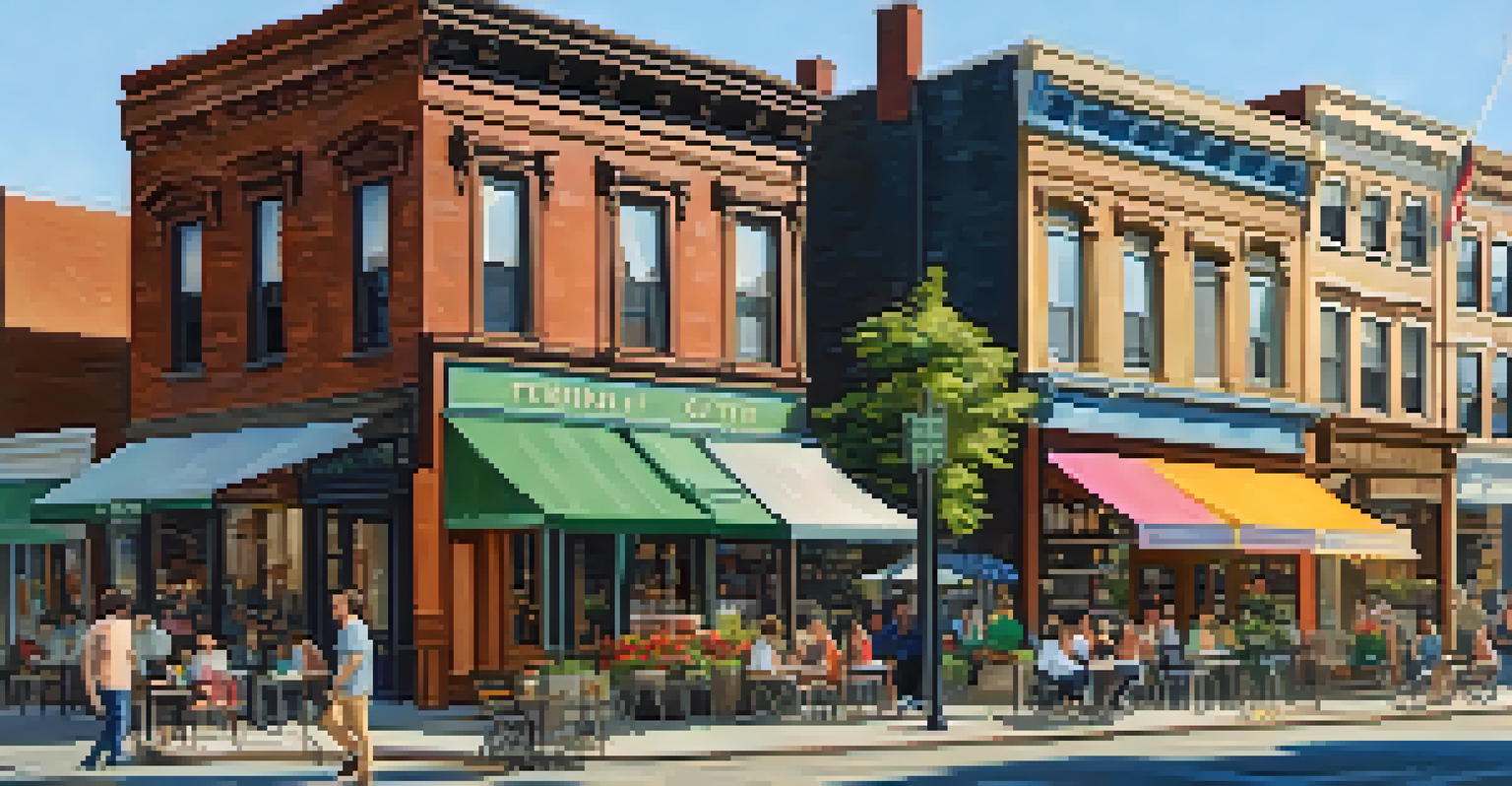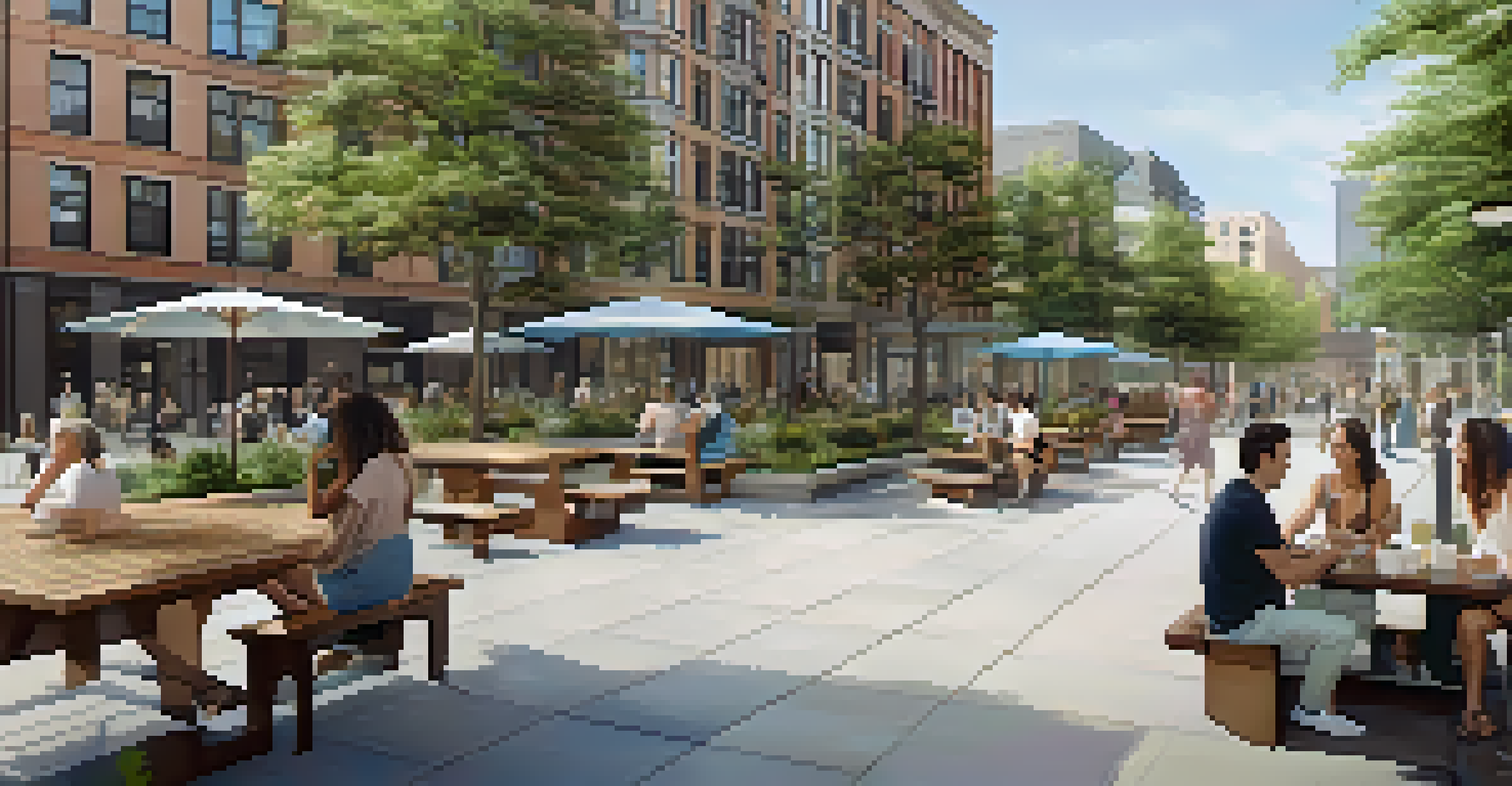Jersey City's Housing Market Trends and Their Implications

An Overview of Jersey City's Housing Market Landscape
Jersey City has been experiencing a notable transformation in its housing market over the past few years. The blend of urban convenience and scenic waterfront views has attracted a diverse range of buyers, from young professionals to families. As a result, the city has become a focal point for real estate development, signaling a shift in demographic preferences.
Real estate is an impermanent investment, but it’s one of the most important things you can own.
The influx of new residents has driven demand, causing home prices to rise steadily. This trend can be attributed to various factors, including improved public transportation links to Manhattan and the availability of modern amenities. As more people seek out the vibrant lifestyle Jersey City offers, understanding these changes becomes essential for both potential buyers and current homeowners.
With the ongoing changes, it's crucial to analyze how these trends not only affect property values but also the overall community. Gentrification and urban development can bring both positive and negative implications, making it important to stay informed about the evolving landscape.
Current Pricing Trends in Jersey City's Housing Market
Pricing trends in Jersey City are a reflection of the broader economic climate and local demand. Recently, the average home price has surged, often outpacing the national average, which speaks to the city's desirability. For instance, prices for condos and single-family homes have increased markedly, attracting both investors and first-time homebuyers.

This escalation in prices has also led to a competitive market, where bidding wars have become commonplace. Buyers are often faced with difficult decisions, needing to act quickly to secure a property. It’s a scenario reminiscent of a fast-paced game, where timing and strategy play key roles in achieving success.
Rising Demand Drives Home Prices
Jersey City's housing market is seeing a surge in home prices due to increased demand from new residents attracted by urban conveniences and amenities.
However, this uptick in prices poses challenges for many long-term residents. As affordability becomes an issue, discussions around housing policy and community support are increasingly vital to ensure that Jersey City remains an inclusive environment for all.
The Impact of Interest Rates on Housing Choices
Interest rates play a pivotal role in shaping housing choices in Jersey City. When rates are low, buyers often feel empowered to make significant investments, leading to increased demand for homes. Conversely, rising interest rates can dampen enthusiasm, making potential homeowners think twice about entering the market.
The best investment on earth is earth.
For example, a slight increase in interest rates can significantly affect monthly mortgage payments, altering what buyers can afford. This dynamic creates an interesting balancing act for both buyers and sellers, as each party navigates the changing financial landscape.
As interest rates fluctuate, it’s essential for buyers to stay informed and consider their options carefully. Understanding how these economic indicators influence purchasing power can help in making sound financial decisions that align with long-term goals.
Neighborhoods to Watch: Emerging Hotspots
As Jersey City's housing market evolves, certain neighborhoods are emerging as hot spots for potential buyers. Areas like Journal Square and the Heights are experiencing revitalization, characterized by new developments and an influx of young families. These neighborhoods are not only becoming more desirable but also more affordable compared to the waterfront.
The charm of these emerging neighborhoods often lies in their unique character and strong community vibe. Local shops, parks, and cultural events contribute to a sense of belonging that appeals to new residents. It's this blend of community and modern living that makes these areas stand out in a competitive market.
Interest Rates Affect Buyer Choices
Fluctuating interest rates significantly influence housing decisions, impacting affordability and the overall enthusiasm for entering the market.
For those considering a move to Jersey City, exploring these neighborhoods could yield exciting opportunities. As the city continues to grow, staying ahead of trends can help buyers find their perfect home in a thriving community.
Rental Market Trends and Their Influence
The rental market in Jersey City is also undergoing significant changes, influenced by the same factors affecting home sales. With many people opting to rent rather than buy, especially amid economic uncertainty, the demand for rental units has surged. This shift is particularly evident in areas close to public transportation, where convenience reigns supreme.
As a result, rental prices have experienced an upward trajectory, making it important for renters to understand the market dynamics. The competition for desirable units can be fierce, often leading to higher prices and fewer available options. This scenario mirrors the home-buying landscape, where timing and market awareness are crucial.
Understanding current rental trends is essential for anyone looking to move to Jersey City. By keeping an eye on where the market is heading, renters can make informed decisions that align with their budgets and lifestyle preferences.
The Role of New Developments in Housing Supply
New developments are a critical component of Jersey City's housing supply, addressing the growing demand for residential spaces. Developers are increasingly focusing on creating mixed-use properties that offer a combination of living, working, and recreational spaces. This trend not only enhances the appeal of the city but also contributes to a more sustainable urban environment.
For instance, projects along the waterfront often include essential amenities like parks and retail spaces, enriching the neighborhood experience. Such developments cater to the needs of the modern urban dweller, emphasizing convenience and lifestyle. It’s like creating a small ecosystem where residents can enjoy everything they need within walking distance.
Emerging Neighborhoods Offer Value
Neighborhoods like Journal Square and the Heights are becoming attractive options for buyers seeking affordability and a strong sense of community.
As these new developments continue to rise, they play a vital role in shaping Jersey City's identity. The balance between preserving the city's unique character and accommodating growth is crucial for maintaining a vibrant community.
Policy Changes and Their Implications for Housing
Policy changes can have a profound impact on the housing market, influencing everything from zoning regulations to tax incentives. Recent initiatives in Jersey City aimed at promoting affordable housing and sustainable development reflect a growing awareness of these issues. Such policies are designed to create a balanced approach to growth, ensuring all residents can benefit from the city's evolution.
For example, measures to increase the availability of affordable units are crucial in combating the rising cost of living. These initiatives can help maintain diversity within neighborhoods and prevent the displacement of long-term residents, fostering a sense of community amidst change.

Understanding these policies is essential for anyone involved in the housing market, whether as a buyer, seller, or renter. Keeping abreast of local regulations can help individuals make informed decisions that align with their housing goals while contributing to the overall health of the community.